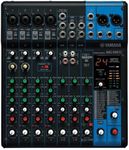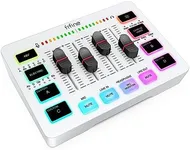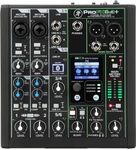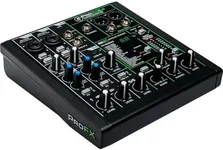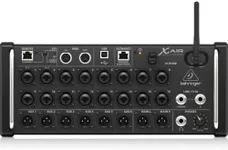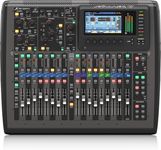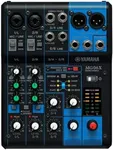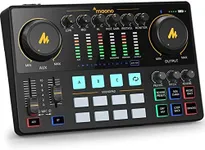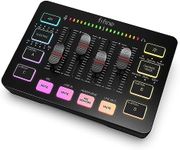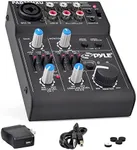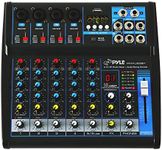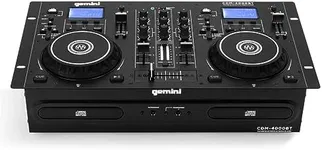Buying Guide for the Best Budget Audio Mixer
Choosing the right audio mixer can significantly enhance your audio production, whether you're a musician, podcaster, or live sound engineer. The key to finding the best fit for you is understanding the various specifications and how they align with your specific needs. Here are the essential specs to consider when selecting an audio mixer and how to navigate them.Number of ChannelsThe number of channels on an audio mixer determines how many audio sources you can connect and control simultaneously. This is important because it dictates the mixer's capacity to handle multiple instruments, microphones, or other audio inputs. Mixers typically range from small units with 2-4 channels to large consoles with 32 or more channels. If you're a solo podcaster or a small band, a mixer with 4-8 channels might suffice. For larger bands or more complex setups, you might need 16 channels or more.
Analog vs. DigitalAnalog mixers are known for their straightforward operation and warm sound quality, while digital mixers offer more advanced features like built-in effects, recallable settings, and computer connectivity. The choice between analog and digital depends on your preference for simplicity and tactile control versus the need for advanced functionality and flexibility. If you prefer a hands-on approach and simplicity, an analog mixer might be best. If you need more versatility and integration with digital workflows, a digital mixer is the way to go.
Built-in EffectsSome mixers come with built-in effects such as reverb, delay, and compression. These can enhance your sound without needing additional external processors. Built-in effects are particularly useful for live performances and quick setups. If you frequently perform live or need to add effects on the fly, look for a mixer with a good range of built-in effects. If you prefer to use external effects processors or software, this feature might be less critical.
Connectivity OptionsConnectivity options refer to the types of inputs and outputs available on the mixer, such as XLR, TRS, RCA, USB, and MIDI. These are important because they determine what kind of equipment you can connect to the mixer. For example, XLR inputs are essential for connecting professional microphones, while USB connectivity is useful for recording directly to a computer. Assess your current and future equipment needs to ensure the mixer has the appropriate connections.
Phantom PowerPhantom power is a feature that supplies power to condenser microphones, which require an external power source to operate. This is important if you plan to use condenser mics for their sensitivity and sound quality. Mixers with phantom power can typically provide +48V to the microphones. If you use or plan to use condenser microphones, ensure your mixer has phantom power capabilities.
Size and PortabilityThe size and portability of a mixer can be crucial, especially if you need to transport it frequently for live gigs or remote recordings. Smaller, more compact mixers are easier to carry and set up, while larger mixers offer more features and channels but can be cumbersome. Consider how often you'll need to move the mixer and choose one that balances your need for portability with the required functionality.
Ease of UseEase of use refers to how intuitive and user-friendly the mixer is. This is important because a complex mixer can slow down your workflow and make it harder to achieve the desired sound. Look for mixers with clear labeling, logical layout, and good documentation. If you're a beginner, a simpler mixer with fewer controls might be easier to learn. More experienced users might prefer a mixer with more advanced features and customization options.
